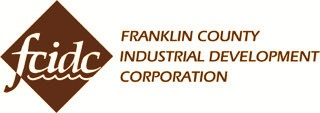Annually, Regional Development Corporations (RDCs) in Vermont compile Regional Project Prioritization lists for their region. For the last few years, FCIDC, working with Northwest Regional Planning Commission, has ranked Franklin County projects based upon a set of criteria as required by the Agency of Commerce and Community Development.
Goal: To produce a list of high priority economic and community development projects that meet certain eligibility requirements (see below). The regional lists are considered living, dynamic documents that are continually updated and edited. The lists will be used by federal, state, regional and local organizations to understand the funding needs of the region and allow regional economic and community development staff help match federal and state funding announcements to projects.
The regional lists express the highest priority projects for each region and the top ten projects from each region will be included in a consolidated statewide list submitted to the Agency of Commerce, who will share it with other funders, to be used by state and federal funders when making funding decisions.
Eligibility and Scoring Criteria: Projects should address the criteria listed below to be included on the Regional Priority Project list. These are the criteria that will be used to score and prioritize each project. Scoring and prioritization is conducted on a continuum for each criterion regarding the degree to which the project meets each criterion. For example, a project that is truly “shovel-ready” (no obstacles to implement except the funding gap) will score higher than one that requires permitting or the project managers do not have site control. A second example is a project that creates 20 new, high-paying jobs will score higher than a project that retains a few jobs. Projects that meet the criteria to a higher degree will score higher and be placed in a higher priority. Because the lists are living and dynamic, projects can be added to the list each year and move up in priority as the project is more fully developed and more fully meets criteria. Projects should, at a minimum be able to address the following on the Project Information Form:
Project Purpose and Benefits to the Region: The project should build capacity in the region for improved economic and community development. Projects that advance economic and community development, especially in areas such as workforce development, developing entrepreneurial ecosystems, and enhancing business clusters, will score highest.
Project Timeline, Milestones, and Status: The project should be prepared to get underway if funded, including factors such as site control, engineering and design, permitting, and funding identification and commitment. Project should also have identified milestones measurable outcomes. Projects that are considered “shovel-ready;” that is, the project is underway, ready to implement or close to ready, and identifies milestones and outcomes, will score higher.
Project Principal Experience: The project should involve an entity that has successfully executed similar projects, managed federal or state grants, and/or successfully developed similar business models, or involve a partnership or collaboration that provides adequate experience. Projects showing experienced project managers or a collaboration/partnership that provides experience, will score higher.
Project Support and Regional Need: The project should address and advance local and regional economic and community development goals and objectives, as identified by the regional plan and/or other studies and reports, and have community support and engagement. The project should not be redundant or duplicate ongoing projects or programs in the region unless there remains a need, such as with housing or childcare ; rather, projects should fill a need in the region. Projects that address a regional goal as expressed in the regional plan and are not duplicative, will score higher.
Project Cost, Identified and Committed Funding/Financing, and a Funding Gap: The project should have a budget developed that includes total project cost, identified sources and uses, and a clearly identified funding gap. The project description should state the funding sources the project is pursuing, the status of those funding/financing sources and, if not secured, identify when the sources are expected to be committed. Also, identify the type of resource (cash, grant, loan, sponsor in-kind, third party in-kind, etc.) and describe which resources can serve as a match, noting that, for example, some grant sources do not allow matching federal funding with other federal funds. Projects that include a budget, all funding information, have an identified gap, and have funding commitments and a match, will score higher.
Job Creation and Retention: The project should create or retain jobs. The project description should state the number and type of jobs to be retained and/or created, including the period of time over which the jobs will be created, the average wage of the jobs, and the benefits expected to be offered. Projects that create new, high-paying jobs with good benefits, will score higher.
